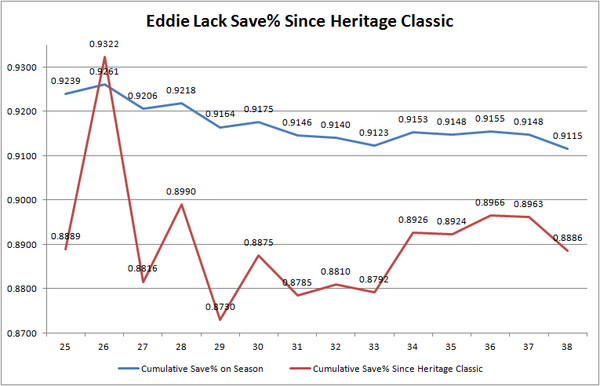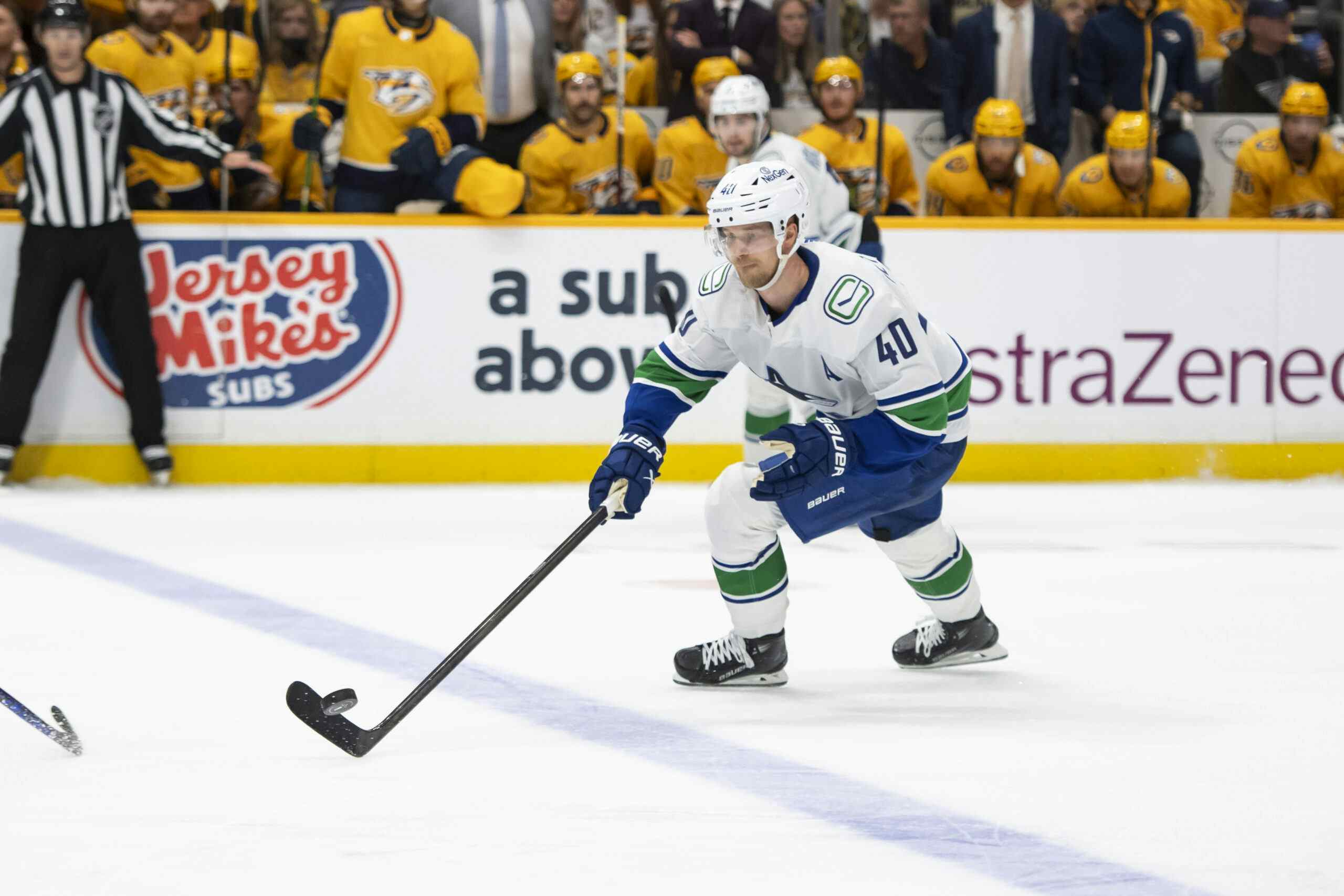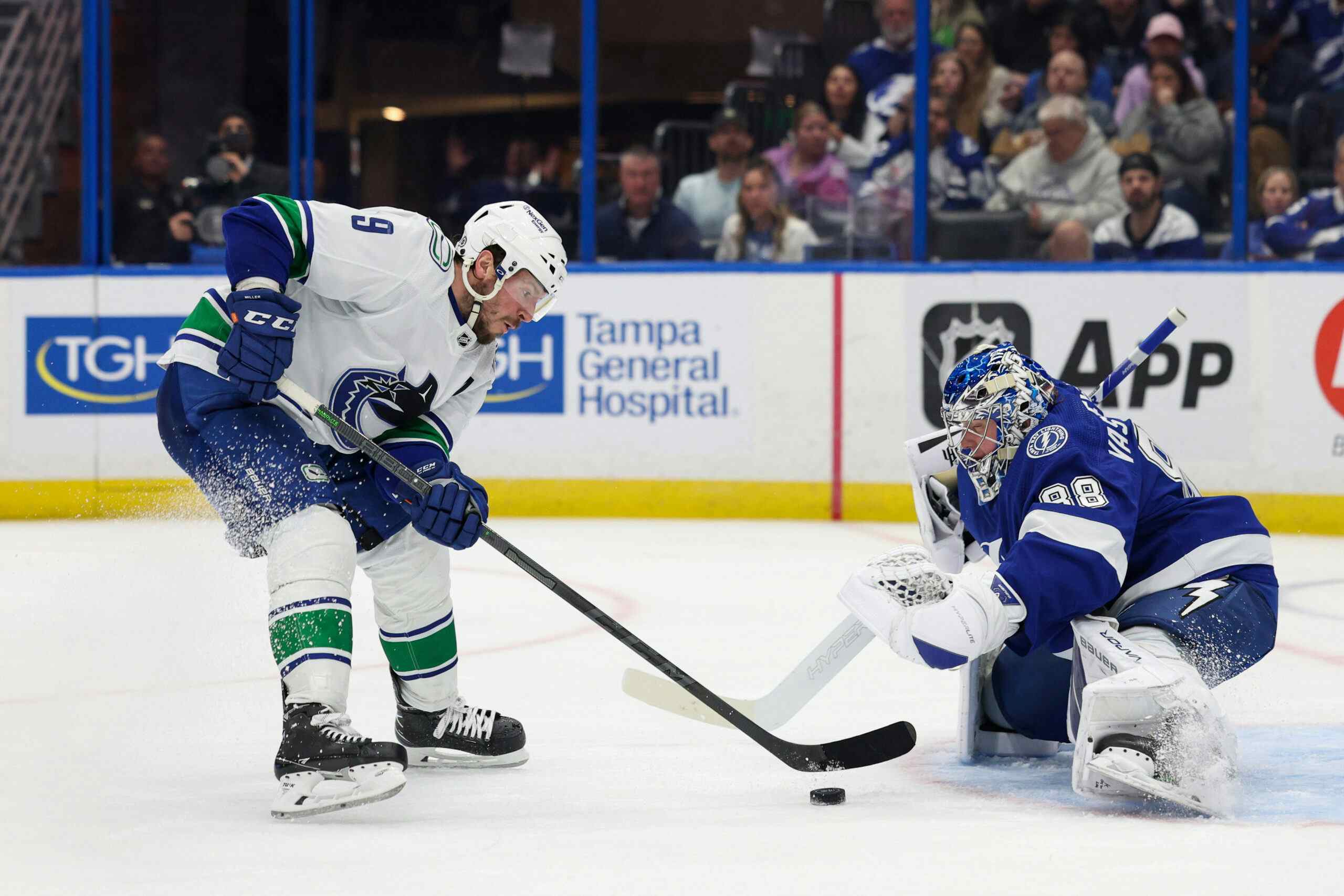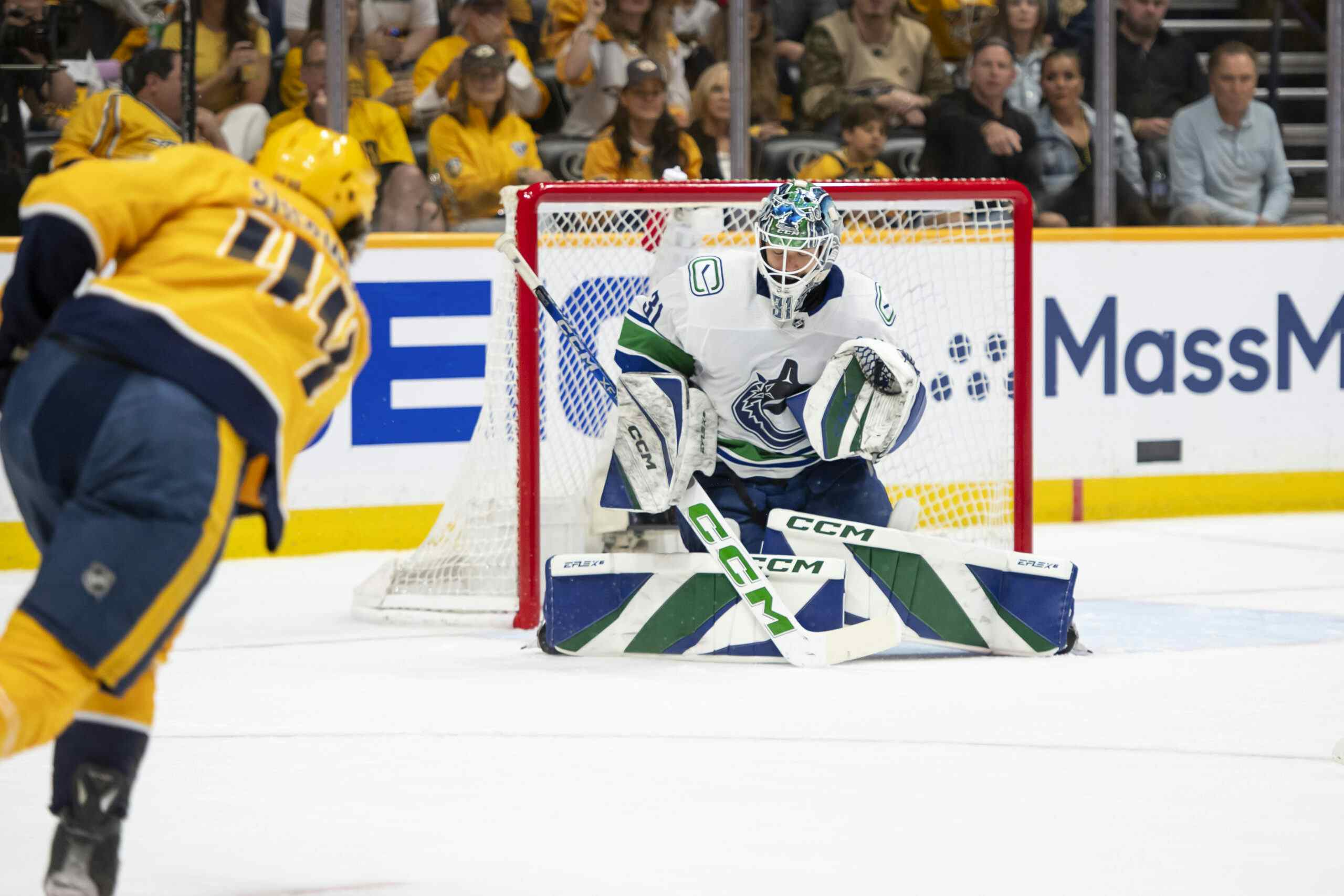Canucks Army Player Previews: Eddie Lack
By J.D. Burke
9 years agoThis summer, we’ve spent no shortage of time debating the merits signing Ryan Miller as a potential “upgrade” in the Canucks’ net. This has less to do with my feelings on Miller than it does my belief that Eddie Lack provides the Canucks with comparable play in net, at a fraction of the cost.
But, rapidly declining ticket sales and the need to satiate an increasingly disinterested fan base necessitated Ryan Miller’s acquisition, at least in the eyes of rookie GM Jim Benning. Can you imagine the reaction of a casual fan upon hearing the Canucks were set to enter the 2014-15 season with Eddie Lack and Jacob Markstrom as their goaltending tandem – they of the combined 87 NHL starts?
Based on the atmosphere at Rogers Arena – no matter the situation or time of year – it’s all too apparent that the casual fan is the one that needs reassuring. They turn the lights on. Would an open approach, one that put winning first, not be equally as satisfying? Probably not. Instant gratification, and what not.
It’s a shame a goalie as serviceable as Eddie Lack is the victim of this. For a look at what played into this decision and what to expect going forward, find me on the other side of the jump.
2013-2014 Performance
There was a lot that went into the decision to anoint Eddie Lack the Canucks starter last season. When Roberto Luongo went down with injury, it was Eddie Lack who picked up the slack and carried the team in his absence. Then, after the Olympics, it was Eddie Lack who was forced to pick up the slack by default instead.
This increased responsibility, which saw Lack start approximately 109989439 games in a row last season, is considered largely responsible for his decline in play late in the season. This seems reasonable. When you dig deeper into the numbers, though, there’s a lot more than mere workload that played into the decline of Lack.
Analytics are the first step in figuring out what drives certain events. While it’s not the most complex hockey statistic, there is immense value to be found in switching from the traditionally ascribed to raw save percentage to even-strength save percentage. Unfortunately, there are a lot of figureheads in hockey that struggle with this concept.
The game is played primarily at 5v5 and the circumstances that surround goaltender play on special teams are less than favorable for the goaltender. When killing penalties, the goaltender’s team is invariably out-manned and this leaves the goaltender facing an obscene amount of shots from high-quality scoring areas. On the powerplay, I’d venture to say goaltenders face a disproportionately high percentage of their shots from grade-A scoring chances relative to what they see at even strength. Shot quality is real, you hear?
Despite being rode face-first into the ground by John Tortorella last season, Lack’s 5v5 sv% hovered around respectable levels for the entire year. When things got bad, his unsustainable shorthanded sv% that took the hit. Here’s Canucks Army overlord, Thomas Drance, on what took place with Lack’s special teams sv% last season:
Keeping that critical qualifier in mind, an 18 game run with a special teams save percentage below .810 screams “tough bounces and bad luck” to me. Maybe it’s something else (perhaps goaltender fatigue shows up more in penalty-kill situations?), but looking at Lack’s performance, I tend to think he remains a reasonable bet to provide the Canucks with league average goaltending in a prescribed starters role.
Rhys also raised some excellent points about what happened to Lack after last years Heritage Classic in what I’d now consider an historic gamer from last season:

The blue line is Eddie Lack’s save percentage on the season, which was 0.924 after Vancouver lost to Ottawa at B.C. Place. The red line is Lack’s save percentage since that game. Now, I have no good explanation as to why this is the case. It could be that Eddie Lack is a true-talent below NHL average goalie and this is just regression towards the mean. It could mean that Eddie Lack is a true-talent above average NHL goalie and this is just some bad variance. It could mean that starting eleven thousand consecutive games is not a reasonable thing to ask of a rookie goaltender and he’s just dead tired. There are probably elements of truth to all three scenarios, but it still doesn’t change the fact that Lack is faltering badly down the stretch.
Take all three of the plausible scenarios posed by Rhys and add them with Drance’s commentary on the role of luck, and look for a plausible middle-ground. That’s likely as close as you’ll get to the reality.
All this noise regarding Lack’s downfall towards the end of last season doesn’t necessarily do justice, when looking at the larger body of work. Even the dwindling sanity of a certain nameless bench boss couldn’t be put into question when looking at his reasoning for the switch from Roberto Luongo to Eddie Lack. There’s something to be said for that.
Logistically speaking, it was a disaster. Take out contractual factors and the feelings that we all too often associate as necessary stepping stones in management-player relationships and ask yourself which goaltender performed better going into that game? The answer is Eddie Lack.
2014-2015 Outlook
Interestingly enough, Lack enters this season in the exact same position he was in yesteryear. The circumstances are considerably different, but at the end of the day he’s a backup again. The departure from a Lack and Markstrom tandem this season has implications beyond stripping the job away from Lack, who at 26 years of age could very well be ready to start.
Consider the dearth of goal scorers that were on this team last season and all the funds that could have been allocated to fixing that. Then consider for a moment that the Canucks could have entered this season with less than $3 million tied up in goaltending. Here’s Drance again, on what once seemed like an inevitability:
Lack and Markstrom are both signed through next season, on one-way deals that combine for a $2.35 million cap-hit. Consider that, in the 2012-13 season, the Canucks’ two goaltenders (Cory Schneider and Luongo) combined for a $9.33 million cap-hit. So should the Canucks wood with their Brynas tandem of Lack and Markstrom next season, it would represent a significant departure in the club’s approach to goaltending.
Just imagine, for a second, how much confidence you might have in the Canucks prospects of making the playoffs had they addressed the gaping second-line center gap, rather than the unnecessarily attended to goaltending?
For Lack, I think a lot of this season will be spent showcasing his abilities to land a starting gig again elsewhere. I’d hardly say he did anything to lose his job this season, especially to a goaltender that actually performed worse last season. How happy do you think Lack is about that?
Projecting goaltender talent, though, is a fickle matter no matter the subject. I could realistically see any one of three scenarios playing out. One of which, involves Lack regaining the starting job in net. The others involve trades at varying points in the season. And if the unpredictability of single-season save percentage has proven anything over these years, it’s that circumstance based, rather than performance based, projections are the wisest to make when forecasting goaltenders.
Recent articles from J.D. Burke





